
29 Mar Is the design technical?
New decision
The Court of Justice of the European Union (CJEU) has recently issued a new decision (C-684/21; 02/03/2023) on the question of how to determine whether a feature of appearance of a registered design is solely dictated by its technical function.
This is an important topic affecting the validity of registered designs in Europe. Indeed, according to Article 8(1) of the CDR (Community Design Regulation No 6/2022), a registered design shall not subsist in features of appearance of a product (usually a shape) which are solely dictated by its technical function.
It is not always easy to assess the purely technical character of a shape. In many cases, when the designer of a product chooses a shape, he takes the visual impression into account, as well as its technical function.
Background: the CJEU “DOCERAM” decision C-395/16 of 8 March 2018
In its previous important decision “DOCERAM” (C-395/16; 08/02/2018), the CJEU held that to determine whether a feature of appearance is solely dictated by its technical function, it is necessary to show that the technical function was the only factor determining the choice of the feature of appearance. For this purpose, the existence of alternative designs fulfilling the same function is irrelevant.
The CJEU justified the latter principle (irrelevance of alternative designs) as a way of preventing an economic operator from being able to register as a design all conceivable variants of shape for fulfilling the same technical function, thereby benefiting from exclusive protection which, in practice, would be equivalent to that conferred by a patent, without being subject to the requirements applicable for obtaining the latter.
However, in the same “DOCERAM” decision, the CJEU clarified that the existence of alternative designs, without being decisive, may be taken into account. More specifically, the assessment must be carried out taking into account, in particular, the design in question, the objective circumstances showing the reasons that governed the choice of the features of the appearance of the product in question, the data relating to its use or even the existence of alternative designs that enable the same technical function to be carried out, provided that these circumstances, these data or this existence are supported by reliable evidence.
In the “DOCERAM” decision, the registered Community designs Nos. 000242730-0001 – 0014 referred to centring pins for the manufacture of ceramic components, with different shapes and sizes:
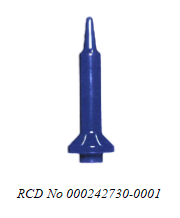
These registered designs were invalidated, because all the product’s shape features were deemed to be solely dictated by its technical function.
Decision C-684/21 of the CJEU of 2 March 2023
In the case considered in this decision, registered design No 001344022-0006 referred to a dispenser for wrapping paper:

The CJEU takes up the general principles already laid down in its previous important “DOCERAM” decision of 2018, in particular the principle according to which the existence of alternative designs is not decisive for concluding that a feature of appearance is not solely dictated by its technical function. Furthermore, the Court specifies that it is not decisive that the owner of the registered design is also the owner of a large number of registrations of alternative designs that enable the same technical function to be fulfilled.
At the same time, the CJEU reaffirms that an overall assessment is required, taking into account the multiple factors relevant in each case. More specifically, the CJEU states that the assessment must be carried out taking into account all the relevant objective circumstances of the particular case, in particular those circumstances governing the choice of the features of appearance in question, the existence of alternative designs that enable the technical function to be fulfilled and the fact that the proprietor of the registered design in question is the owner of a large number of alternative registered designs, without the latter being decisive.
On the other hand, the CJEU also ruled on the question of whether a possible polychromy of the product should be considered when the registered design does not show this polychromy. The question arose because the proprietor of the registered design had argued that the paper dispenser was made in two parts that can be assembled together, so that the product can be easily manufactured in a wide variety of colour combinations, which indicates that the designer took into account the visual impression of the product and not only its technical function. The CJEU considers that, for the purposes of examining whether the appearance of a product is solely dictated by the technical function, the fact that the design of the product admits a polychrome cannot be taken into account where this is not derivable from the registered design. In this case, the registered design (RCD No 001344022-0006) contains only black and white drawings.
Remarks
Industrial design, by its very nature, often combines utility and appearance. Therefore, in general it is possible to identify a technical function in most design products.
In view of the CJEU decisions discussed above, it may seem difficult to defend the validity of a design registered in Europe when its shape relates to a technical function. According to the principles established by these decisions, it is necessary to show that the designer has taken into account considerations other than the technical function, in particular considerations related to the visual impression of the product, and it is not sufficient to argue that there are alternative shapes fulfilling the same technical function, or that it is possible to manufacture the product with finishes that are not visible in the figures of the registered design.
However, in practice, it is possible to validly register designs whose shape is related to a technical function.
First of all, it should be recalled that a registered design is only invalid if all its features of appearance are solely dictated by its technical function. Even if one part of a product is excluded from the design protection because it is solely dictated by its technical function, this does not prevent the other parts of the product from conferring the design the corresponding novelty and individual character necessary for the validity of the registration.
Secondly, attributing a technical function to a shape is not sufficient to conclude that this shape is solely dictated by its technical function. It is necessary to assess whether, in the conception of the design, the visual impression of the product has been considered, and this assessment must be made taking into account the multiple factors relevant in each case.
There are a number of recent decisions of the Boards of Appeal of the EUIPO in which the Board has rejected that the shape of the design is solely dictated by its technical function.
Recent decisions of the EUIPO Boards of Appeal
The registered Community designs shown below have been the subject of recent decisions of the EUIPO Boards of Appeal, issued in 2022 and 2023. In all cases, the Boards of Appeal have rejected that the shape of the design is solely dictated by its technical function.
· RCD-000699194-0004 – Decision R 2062/2019-3 of 03/02/2022
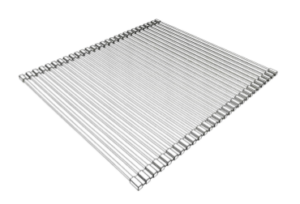
The registered design relates to a support that can be used in the kitchen as a board for cutting food or as a table protector.
The Board of Appeal has considered that, although some features of the product may be predetermined for technical reasons, such as the minimum diameter of the rods, the maximum distance between rods and the connecting elements at the ends of the rods, this is not enough to invalidate the registration. The Board considers that it is possible to prepare food by simply using a table, rather than the product referred to in the design, and that this product is a complement that can be in the foreground of the kitchen and therefore appearance is important in the design.
· RCD-002873877-0002 – Decision R 0024/2021-3 of 16/03/2022

The registered design relates to a card reader:
In this case, the Board of Appeal rejects the arguments for invalidity of the registration because they relate only to the technical function of the card slot, without considering the other features of appearance of the product such as the square shape, the rounded corners and the smooth surface.
· RCD-003517234-0095 – Decision R 0485/2021-3 of 28/09/2022
The registered design relates to a connector intended to be partially inserted into a hole in the edge of a plate (e.g. for joining elements of a piece of furniture):
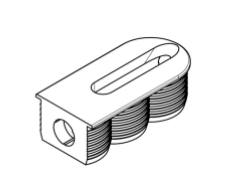
The Board of Appeal considers that the design of the contested connector is based not only on technical considerations, but also on the appearance of the body and of the housing which remains visible.
In this case, the Board of Appeal takes account of the existence on the market of a wide variety of connector shapes. That variety of shapes, without being decisive, reinforces the conclusion that technical function is not the only consideration considered in the design.
· RCD-002148726-0001 – Decision R 0878/2022-3 of 16/02/2023
The registered design relates to heated socks:
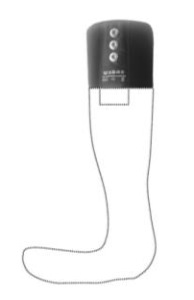
The Board of Appeal considers that not all features of appearance are solely dictated by its technical function. The design in question is part of a product (a heated sock) in which it must be assumed that aesthetic considerations also play a role. The fact that aesthetic or visual appearance is generally an important factor in the design of clothing is also a relevant factor. Apart from technical considerations, the colour, positioning and size of the different elements may also have played a role in the design.
It should be noted that the Board of Appeal took into account the existence of patent applications of the proprietor relating to technical aspects of the heated sock but considered that this was not in itself decisive. According to the Board, the patent documents have a purely technical purpose and should not serve to automatically rule out the possibility that considerations other than the technical ones may also have influenced the creation of the design.
· RCD-000141999-0008 – Decision R 2416/2018-3 of 03/03/2023
The registered design relates to a roll of labels for printing purposes:
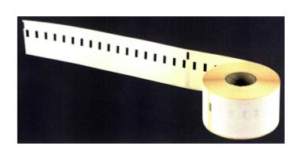
The Board of Appeal considers that the design contains a number of features which were chosen solely to fulfil their function, but it also contains other features, such as the back strip, the labels and the colours, for which it has not been proved that they were chosen to fulfil solely a technical function.
In this case, the Board of Appeal also takes into account the existence of a variety of alternative shapes. This variety of shapes, without being decisive, reinforces the conclusion that technical function is not the only consideration taken into account in the design.
Furthermore, the Board takes into consideration an affidavit of the designer, from which it appears that, in order to design the labels, he chose certain features, such as the colour of the back strip, the rounded sides of the holes, the specific length of the print marks and the rectangle at the ends of the print marks, not only because of their technical function but also because of the need to meet expectations.
Author: Robert Roser Galard, PhD Energy Engineering, Spanish Industrial Property Attorney, European Patent Attorney, European Trademark and Design Attorney.
Photo by 愚木混株 cdd20 on Unsplash.com



